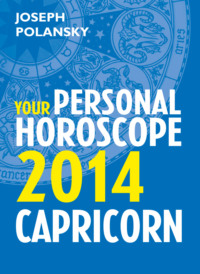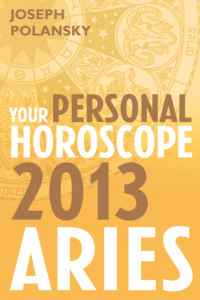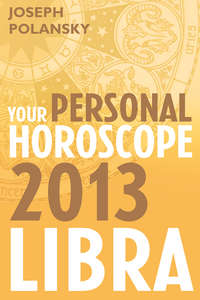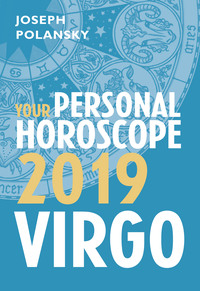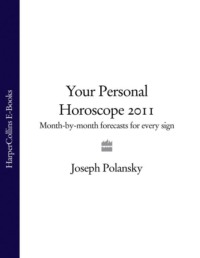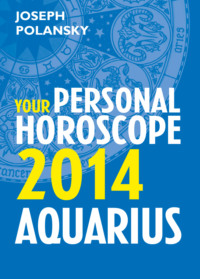
Полная версия
Gemini 2019: Your Personal Horoscope

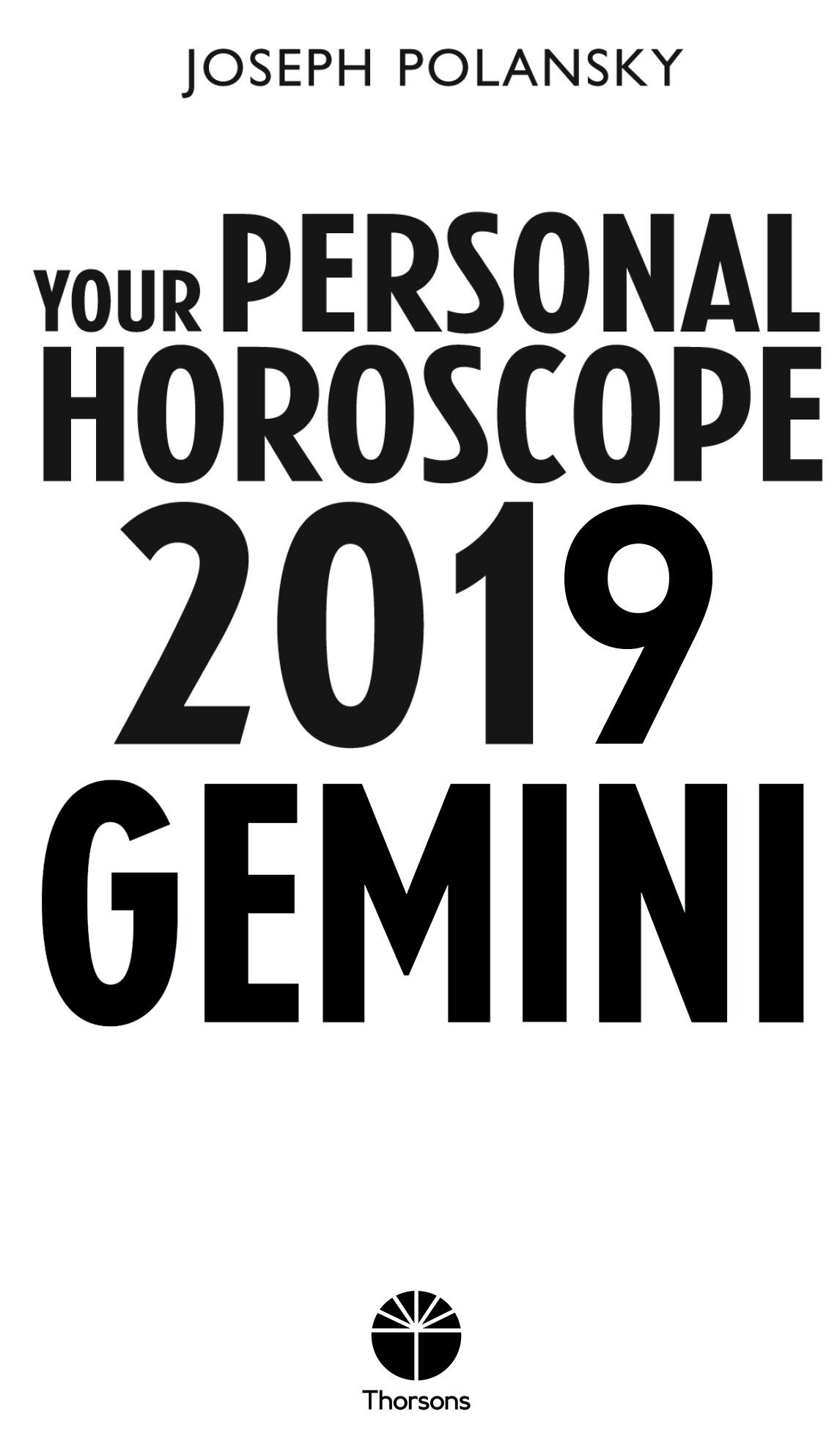
Copyright
Thorsons
An imprint of HarperCollinsPublishers
1 London Bridge Street
London SE1 9GF
www.harpercollins.co.uk
First published by Thorsons 2018
FIRST EDITION
© Star ★ Data, Inc. 2018
Cover layout design © HarperCollinsPublishers Ltd 2018
Cover illustration © Sally Taylor
A catalogue record of this book is available from the British Library
Star ★ Data, Inc. assert the moral right to be identified as the authors of this work
All rights reserved under International and Pan-American Copyright Conventions. By payment of the required fees, you have been granted the nonexclusive, non-transferable right to access and read the text of this e-book on screen. No part of this text may be reproduced, transmitted, downloaded, decompiled, reverse engineered, or stored in or introduced into any information storage retrieval system, in any form or by any means, whether electronic or mechanical, now known or hereinafter invented, without the express written permission of HarperCollins e-books.
Find out about HarperCollins and the environment at
www.harpercollins.co.uk/green
Source ISBN: 9780008273507
Ebook Edition © May 2018 ISBN: 9780008301934
Version: 2018-05-01
Dedication
The author is grateful to the people
of STAR ★ DATA, who truly fathered
this book and without whom it
could not have been written.
Contents
Cover
Title Page
Copyright
Dedication
Introduction
A Note on the ‘New Zodiac’
Glossary of Astrological Terms
Gemini
Personality Profile
Understanding a Gemini
Horoscope for 2019
Month-by-month Forecasts
About the Publisher
Introduction
Welcome to the fascinating and intricate world of astrology!
For thousands of years the movements of the planets and other heavenly bodies have intrigued the best minds of every generation. Life holds no greater challenge or joy than this: knowledge of ourselves and the universe we live in. Astrology is one of the keys to this knowledge.
Your Personal Horoscope 2019 gives you the fruits of astrological wisdom. In addition to general guidance on your character and the basic trends of your life, it shows you how to take advantage of planetary influences so you can make the most of the year ahead.
The section on each sign includes a Personality Profile, a look at general trends for 2019, and in-depth month-by-month forecasts. The Glossary explains some of the astrological terms you may be unfamiliar with.
One of the many helpful features of this book is the ‘Best’ and ‘Most Stressful’ days listed at the beginning of each monthly forecast. Read these sections to learn which days in each month will be good overall, good for money, and good for love. Mark them on your calendar – these will be your best days. Similarly, make a note of the days that will be most stressful for you. It is best to avoid booking important meetings or taking major decisions on these days, as well as on those days when important planets in your horoscope are retrograde (moving backwards through the zodiac).
The Major Trends section for your sign lists those days when your vitality is strong or weak, or when relationships with your co-workers or loved ones may need a bit more effort on your part. If you are going through a difficult time, take a look at the colour, metal, gem and scent listed in the ‘At a Glance’ section of your Personality Profile. Wearing a piece of jewellery that contains your metal and/or gem will strengthen your vitality, just as wearing clothes or decorating your room or office in the colour ruled by your sign, drinking teas made from the herbs ruled by your sign or wearing the scents associated with your sign will sustain you.
Another important virtue of this book is that it will help you to know not only yourself but those around you: your friends, co-workers, partners and/or children. Reading the Personality Profile and forecasts for their signs will provide you with an insight into their behaviour that you won’t get anywhere else. You will know when to be more tolerant of them and when they are liable to be difficult or irritable.
In this edition we have included foot reflexology charts as part of the health section. So many health problems could perhaps be avoided or alleviated if we understood which organs were most vulnerable and what we could do to protect them. Though there are many natural and drug-free ways to strengthen vulnerable organs, these charts show a valid way to proceed. The vulnerable organs for the year ahead are clearly marked in the charts. It’s very good to massage the whole foot on a regular basis, as the feet contain reflexes to the entire body. Try to pay special attention to the specific areas marked in the charts. If this is done diligently, health problems can be avoided. And even if they can’t be completely avoided, their impact can be softened considerably.
I consider you – the reader – my personal client. By studying your Solar Horoscope I gain an awareness of what is going on in your life – what you are feeling and striving for and the challenges you face. I then do my best to address these concerns. Consider this book the next best thing to having your own personal astrologer!
It is my sincere hope that Your Personal Horoscope 2019 will enhance the quality of your life, make things easier, illuminate the way forward, banish obscurities and make you more aware of your personal connection to the universe. Understood properly and used wisely, astrology is a great guide to knowing yourself, the people around you and the events in your life – but remember that what you do with these insights – the final result – is up to you.
A Note on the ‘New Zodiac’
Recently an article was published that postulated two things: the discovery of a new constellation – Ophiuchus – making a thirteenth constellation in the heavens and thus a thirteenth sign, and the statement that because the Earth has shifted relative to the constellations in the past few thousand years, all the signs have shifted backwards by one sign. This has caused much consternation, and I have received a stream of letters, emails and phone calls from people saying things like: ‘I don’t want to be a Taurus, I’m happy being a Gemini’, ‘What’s my real sign?’ or ‘Now that I finally understand myself, I’m not who I think I am!’
All of this is ‘much ado about nothing’. The article has some partial truth to it. Yes, in two thousand years the planets have shifted relative to the constellations in the heavens. This is old news. We know this and Hindu astrologers take this into account when casting charts. This shift doesn’t affect Western astrologers in North America and Europe. We use what is called a ‘tropical’ zodiac. This zodiac has nothing to do with the constellations in the heavens. They have the same names, but that’s about it. The tropical zodiac is based on the Earth’s revolution around the Sun. Imagine the circle that this orbit makes, then divide this circle by twelve and you have our zodiac. The Spring Equinox is always 0 degrees (Aries), and the Autumn Equinox is always 0 degrees Libra (180 degrees from 0 Aries). At one time a few thousand years ago, these tropical signs coincided with the actual constellations; they were pretty much interchangeable, and it didn’t matter what zodiac you used. But in the course of thousands of years the planets have shifted relative to these constellations. Here in the West it doesn’t affect our practice one iota. You are still the sign you always were.
In North America and Europe there is a clear distinction between an astrological sign and a constellation in the heavens. This issue is more of a problem for Hindu astrologers. Their zodiac is based on the actual constellations – this is called the ‘sidereal’ zodiac. And Hindu astrologers have been accounting for this shift all the time. They keep close tabs on it. In two thousand years there is a shift of 23 degrees, and they subtract this from the Western calculations. So in their system many a Gemini would be a Taurus and this is true for all the signs. This is nothing new – it is all known and accounted for, so there is no bombshell here.
The so-called thirteenth constellation, Ophiuchus, is also not a problem for the Western astrologer. As we mentioned, our zodiac has nothing to do with the constellations. It could be more of a problem for the Hindus, but my feeling is that it’s not a problem for them either. What these astronomers are calling a new constellation was probably considered a part of one of the existing constellations. I don’t know this as a fact, but I presume it is so intuitively. I’m sure we will soon be getting articles by Hindu astrologers explaining this.
Glossary of Astrological Terms
Ascendant
We experience day and night because the Earth rotates on its axis once every 24 hours. It is because of this rotation that the Sun, Moon and planets seem to rise and set. The zodiac is a fixed belt (imaginary, but very real in spiritual terms) around the Earth. As the Earth rotates, the different signs of the zodiac seem to the observer to rise on the horizon. During a 24-hour period every sign of the zodiac will pass this horizon point at some time or another. The sign that is at the horizon point at any given time is called the Ascendant, or rising sign. The Ascendant is the sign denoting a person’s self-image, body and self-concept – the personal ego, as opposed to the spiritual ego indicated by a person’s Sun sign.
Aspects
Aspects are the angular relationships between planets, the way in which one planet stimulates or influences another. If a planet makes a harmonious aspect (connection) to another, it tends to stimulate that planet in a positive and helpful way. If, however, it makes a stressful aspect to another planet, this disrupts that planet’s normal influence.
Astrological Qualities
There are three astrological qualities: cardinal, fixed and mutable. Each of the 12 signs of the zodiac falls into one of these three categories.
Cardinal Signs
Aries, Cancer, Libra and Capricorn
The cardinal quality is the active, initiating principle. Those born under these four signs are good at starting new projects.
Fixed Signs
Taurus, Leo, Scorpio and Aquarius
Fixed qualities include stability, persistence, endurance and perfectionism. People born under these four signs are good at seeing things through.
Mutable Signs
Gemini, Virgo, Sagittarius and Pisces
Mutable qualities are adaptability, changeability and balance. Those born under these four signs are creative, if not always practical.
Direct Motion
When the planets move forward through the zodiac – as they normally do – they are said to be going ‘direct’.
Grand Square
A Grand Square differs from a normal Square (usually two planets separated by 90 degrees) in that four or more planets are involved. When you look at the pattern in a chart you will see a whole and complete square. This, though stressful, usually denotes a new manifestation in the life. There is much work and balancing involved in the manifestation.
Grand Trine
A Grand Trine differs from a normal Trine (where two planets are 120 degrees apart) in that three or more planets are involved. When you look at this pattern in a chart, it takes the form of a complete triangle – a Grand Trine. Usually (but not always) it occurs in one of the four elements: Fire, Earth, Air or Water. Thus the particular element in which it occurs will be highlighted. A Grand Trine in Water is not the same as a Grand Trine in Air or Fire, etc. This is a very fortunate and happy aspect, and quite rare.
Houses
There are 12 signs of the zodiac and 12 houses of experience. The 12 signs are personality types and ways in which a given planet expresses itself; the 12 houses show ‘where’ in your life this expression takes place. Each house has a different area of interest. A house can become potent and important – a house of power – in different ways: if it contains the Sun, the Moon or the ‘ruler’ of your chart; if it contains more than one planet; or if the ruler of that house is receiving unusual stimulation from other planets.
1st House
Personal Image and Sensual Delights
2nd House
Money/Finance
3rd House
Communication and Intellectual Interests
4th House
Home and Family
5th House
Children, Fun, Games, Creativity, Speculations and Love Affairs
6th House
Health and Work
7th House
Love, Marriage and Social Activities
8th House
Transformation and Regeneration
9th House
Religion, Foreign Travel, Higher Education and Philosophy
10th House
Career
11th House
Friends, Group Activities and Fondest Wishes
12th House
Spirituality
Karma
Karma is the law of cause and effect which governs all phenomena. We are all where we find ourselves because of karma – because of actions we have performed in the past. The universe is such a balanced instrument that any act immediately sets corrective forces into motion – karma.
Long-term Planets
The planets that take a long time to move through a sign show the long-term trends in a given area of life. They are important for forecasting the prolonged view of things. Because these planets stay in one sign for so long, there are periods in the year when the faster-moving (short-term) planets will join them, further activating and enhancing the importance of a given house.
Jupiter
stays in a sign for about 1 year
Saturn
2½ years
Uranus
7 years
Neptune
14 years
Pluto
15 to 30 years
Lunar
Relating to the Moon. See also ‘Phases of the Moon’, below.
Natal
Literally means ‘birth’. In astrology this term is used to distinguish between planetary positions that occurred at the time of a person’s birth (natal) and those that are current (transiting). For example, Natal Sun refers to where the Sun was when you were born; transiting Sun refers to where the Sun’s position is currently at any given moment – which usually doesn’t coincide with your birth, or Natal, Sun.
Out of Bounds
The planets move through the zodiac at various angles relative to the celestial equator (if you were to draw an imaginary extension of the Earth’s equator out into the universe, you would have an illustration of this celestial equator). The Sun – being the most dominant and powerful influence in the Solar system – is the measure astrologers use as a standard. The Sun never goes more than approximately 23 degrees north or south of the celestial equator. At the winter solstice the Sun reaches its maximum southern angle of orbit (declination); at the summer solstice it reaches its maximum northern angle. Any time a planet exceeds this Solar boundary – and occasionally planets do – it is said to be ‘out of bounds’. This means that the planet exceeds or trespasses into strange territory – beyond the limits allowed by the Sun, the ruler of the Solar system. The planet in this condition becomes more emphasized and exceeds its authority, becoming an important influence in the forecast.
Phases of the Moon
After the full Moon, the Moon seems to shrink in size (as perceived from the Earth), gradually growing smaller until it is virtually invisible to the naked eye – at the time of the next new Moon. This is called the waning Moon phase, or the waning Moon.
After the new Moon, the Moon gradually gets bigger in size (as perceived from the Earth) until it reaches its maximum size at the time of the full Moon. This period is called the waxing Moon phase, or waxing Moon.
Retrogrades
The planets move around the Sun at different speeds. Mercury and Venus move much faster than the Earth, while Mars, Jupiter, Saturn, Uranus, Neptune and Pluto move more slowly. Thus there are times when, relative to the Earth, the planets appear to be going backwards. In reality they are always going forward, but relative to our vantage point on Earth they seem to go backwards through the zodiac for a period of time. This is called ‘retrograde’ motion and tends to weaken the normal influence of a given planet.
Short-term Planets
The fast-moving planets move so quickly through a sign that their effects are generally of a short-term nature. They reflect the immediate, day-to-day trends in a horoscope.
Moon
stays in a sign for only 2½ days
Mercury
20 to 30 days
Sun
30 days
Venus
approximately 1 month
Mars
approximately 2 months
T-square
A T-square differs from a Grand Square (see above) in that it is not a complete square. If you look at the pattern in a chart it appears as ‘half a complete square’, resembling the T-square tools used by architects and designers. If you cut a complete square in half, diagonally, you have a T-square. Many astrologers consider this more stressful than a Grand Square, as it creates tension that is difficult to resolve. T-squares bring learning experiences.
Transits
This term refers to the movements or motions of the planets at any given time. Astrologers use the word ‘transit’ to make the distinction between a birth, or Natal, planet (see ‘Natal’, above) and the planet’s current movement in the heavens. For example, if at your birth Saturn was in the sign of Cancer in your 8th house, but is now moving through your 3rd house, it is said to be ‘transiting’ your 3rd house. Transits are one of the main tools with which astrologers forecast trends.
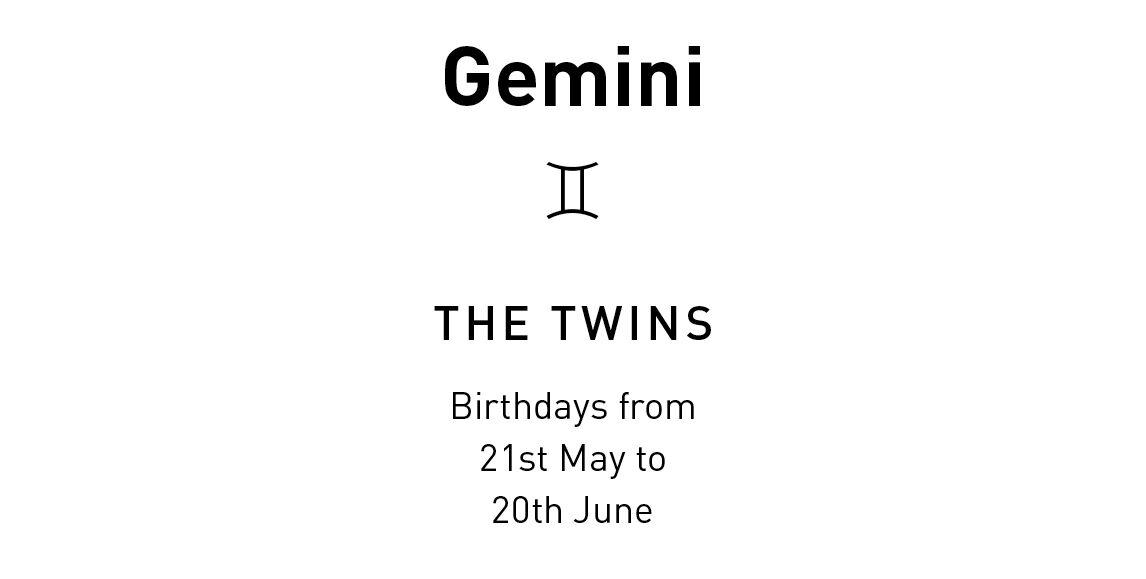
Personality Profile
GEMINI AT A GLANCE
Element – Air
Ruling Planet – Mercury
Career Planet – Neptune
Love Planet – Jupiter
Money Planet – Moon
Planet of Health and Work – Pluto
Planet of Home and Family Life – Mercury
Colours – blue, yellow, yellow-orange
Colour that promotes love, romance and social harmony
Конец ознакомительного фрагмента.
Текст предоставлен ООО «ЛитРес».
Прочитайте эту книгу целиком, купив полную легальную версию на ЛитРес.
Безопасно оплатить книгу можно банковской картой Visa, MasterCard, Maestro, со счета мобильного телефона, с платежного терминала, в салоне МТС или Связной, через PayPal, WebMoney, Яндекс.Деньги, QIWI Кошелек, бонусными картами или другим удобным Вам способом.





